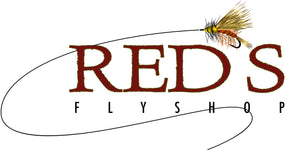Euro Nymphing Tip for Hook Setting
This tip is harder than it appears. Anyone that has done much tight line nymphing has screwed this up. I still occassionally set the hook and wind up in a tree behind me, set on bumps that were just contact with rocks, set the hook back into my rod tip creating a major tangle, and the list goes on and on. I'm not perfect. That moment of limbo as you see the sighter tighten up, or feel that leader so gently coming tight can cause us to lose our minds! It culminates like Buck Fever. Every decision we made up till that point goes out the window and pretty soon we are spooking fish, snagging trees behind us, and setting the hook on little bumps only a moment before a big ol' mossback trout picks up your fly.
Having the psycological fortitude to "Half Check" a suspicious twitch of the sighter or suspicious increase in tension is tough. You really have to make a firm decision that goes something like this.
"I am going to check every suspicous bite befor a full set EVERY TIME". This means no full hook sets until the fish is on. You'll need to repeat this mantra as your presenting your fly in order for it to stick with you. It's called neuro linguistic programming and is very common in high stress situations like shooting sports, sniper training, and other high stress moments that require calm.
When should you focus on a Half Check?
- When you are in sensitive water - meaning if you swipe a full swinging hook set through the sweet spot you might spook that one big fish.
- Brush or trees behind or above you. How many times have you set the hook right into a tree you KNEW was there!? Talk yourself through it..... half check half check half check..... say this to yourself as your fly is beginning to make contact.
- Cold water or situations with soft takes.
- Tiny flies. If the trout's flavor of choice is a #18 or smaller, work with a Half Check type set and find the set that seems to work best. A take on a #20 nymph is barely perceivable at times and you'll need to just "tension up" and see if the trout's there. If not... drop the tip and let it drift.

